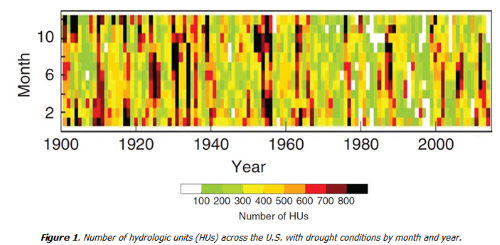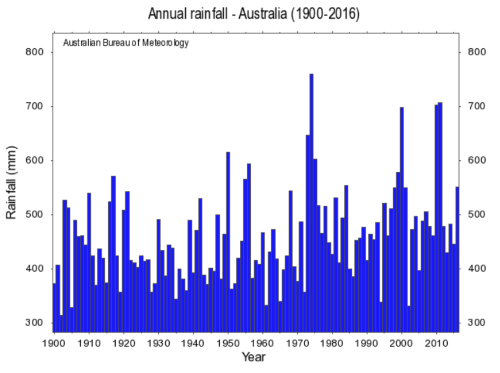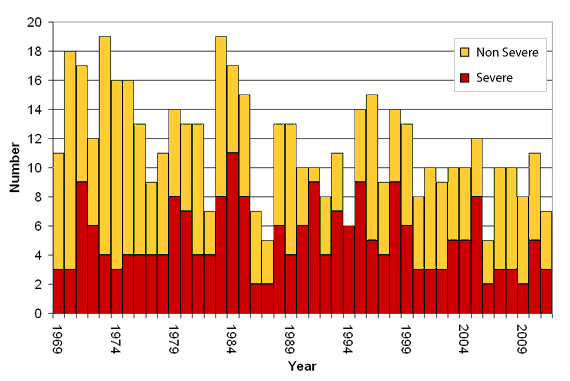More and more studies are emerging showing the benefits of increased CO2 in the atmosphere. While there appears to be a correlation with temperature, there is also a correlation with more rainfall, more plant life and fewer storms. Some of these obviously act to counteract the temperature correlation.
While the Stern Review is widely cited as evidence of the costs of global warming, it was completed before any of these facts were known. Wouldn’t it be ironic if the unknown unknowns actually mean there is a net benefit to CO2 emissions?
And if there is, and it is reasonable to charge emitters for the “bad” effects of atmospheric CO2 via carbon levies etc, then isn’t it just as reasonable to charge renewables for the externalities of not having CO2 in the atmosphere?
Here are some pieces of evidence on what is actually occurring in the world.
First, a graph looking at droughts in the continental USA.
 McCabe, G.J., Wolock, D.M. and Austin, S.H. 2017. Variability of runoff-based drought conditions in the conterminous United States. International Journal of Climatology 37: 1014-1021.
McCabe, G.J., Wolock, D.M. and Austin, S.H. 2017. Variability of runoff-based drought conditions in the conterminous United States. International Journal of Climatology 37: 1014-1021.
The second half of the C20 is obviously much wetter than the first half, and it wasn’t until the 40s that CO2 was reckoned to have much of an effect.
This is echoed by data from our own BOM.
 http://www.bom.gov.au/climate/change/index.shtml#tabs=Tracker&tracker=timeseries&tQ=graph%3Drain%26area%3Daus%26season%3D0112%26ave_yr%3D0
http://www.bom.gov.au/climate/change/index.shtml#tabs=Tracker&tracker=timeseries&tQ=graph%3Drain%26area%3Daus%26season%3D0112%26ave_yr%3D0
Phys.org has reported:
A small team of researchers with the Directorate for Sustainable Resources in Italy and Ghent University in Belgium has found evidence that shows some parts of the planet are becoming cooler and others warmer due to an increase in localized greening. As the team notes in their paper published in the journal Science, much of the increase in greening is due to an increase of atmospheric carbon dioxide.
